Overview
To successfully sell wine from home and boost sales, individuals must navigate legal requirements, identify their target customer base, build an engaging online sales platform, implement effective marketing strategies, and optimize shipping processes. This approach is not just beneficial; it is essential for thriving in the competitive wine market. Compliance with regulations is paramount, as it safeguards your business and enhances customer trust.
Identifying your target customer base is crucial for effective marketing. Understanding who your customers are allows you to tailor your messaging and offerings to meet their preferences, thereby increasing engagement and conversion rates. Building an engaging online sales platform will serve as your storefront, where first impressions matter. A user-friendly interface paired with compelling content can significantly enhance the shopping experience.
Effective marketing strategies are the lifeblood of sales growth. Utilize targeted campaigns that resonate with your audience, leveraging data and insights to refine your approach. Furthermore, optimizing shipping processes not only ensures timely delivery but also contributes to customer satisfaction, which is vital for repeat business.
In conclusion, these five essential steps—compliance, targeted marketing, an engaging online presence, effective strategies, and optimized logistics—are interconnected. Together, they create a robust framework for success in selling wine from home. Embrace these principles to enhance customer satisfaction and drive sales growth.
Introduction
Navigating the world of wine sales from home presents a unique blend of opportunity and challenge. With the rise of e-commerce, aspiring wine entrepreneurs can tap into a growing market. However, success hinges on understanding the intricate legal landscape and effectively reaching their target audience.
How can one transform a passion for wine into a thriving business while ensuring compliance and building a loyal customer base? This guide outlines five essential steps to help wine enthusiasts sell from home and maximize their sales potential.
Establish Legal Requirements for Selling Wine
To understand how to sell wine from home successfully, it is imperative to first navigate the legal requirements. To understand how to sell wine from home, you must first obtain a Federal Basic Permit from the Alcohol and Tobacco Tax and Trade Bureau (TTB), as this permit is essential for producing and selling alcohol. Following this, it is crucial to check your state's regulations regarding how to sell wine from home, since each state has distinct licensing requirements.
For example, in California, understanding how to sell wine from home requires:
- Obtaining a state permit from the Alcoholic Beverage Control (ABC)
- Label approval before any alcoholic beverage can be sold
Additionally, researching local zoning laws is vital to ensure your home-based business, especially when learning how to sell wine from home, complies with local ordinances. Finally, it is essential to stay informed about any changes in laws that may impact your business operations.
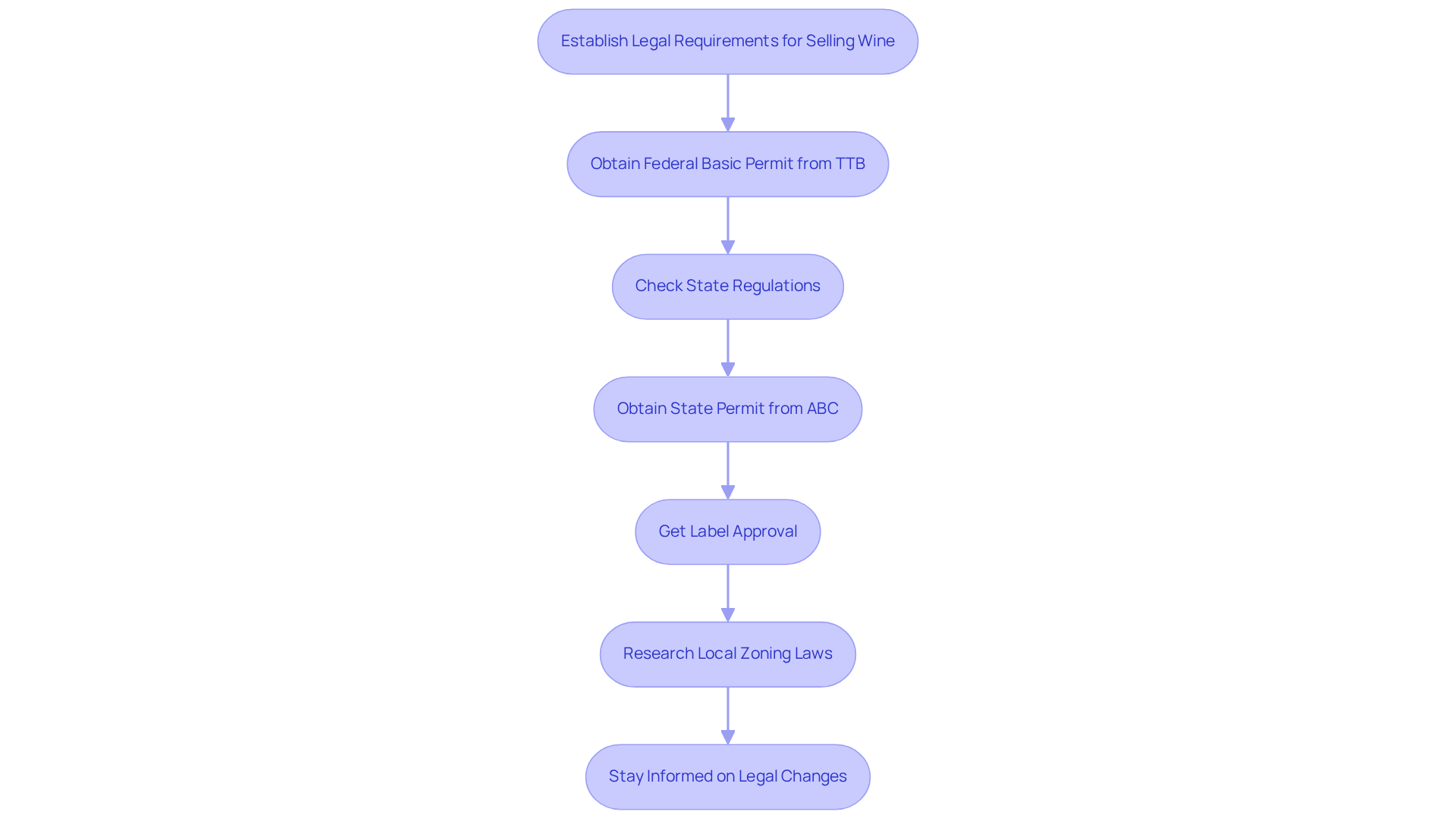
Identify and Target Your Ideal Customer Base
To learn how to sell wine from home successfully, it is essential to clearly identify your target audience. Begin by analyzing key demographics such as age, income level, and geographic location. Utilize surveys and social media insights to gather information on potential clients' preferences and behaviors. Develop detailed customer personas that encapsulate your target audience, emphasizing their interests and buying habits. For instance, if your wine targets millennials, highlight features such as sustainability and unique flavor profiles in your promotional efforts. Customize your messaging to connect with these consumers, ensuring that your approaches align with their values and preferences.
This targeted strategy not only enhances engagement but also nurtures brand loyalty. Wineries that have implemented personalized promotional campaigns have experienced significant increases in sales. Enocap's proven approaches can assist in transforming casual buyers into devoted club members, further boosting customer retention. For example, one winery saw a 3x increase in open rates after segmenting their audience, showcasing the power of targeted marketing.
Moreover, millennials are known to spend more on quality foods and drinks than previous generations, making them a crucial demographic for wineries to target. By creating sustainable direct-to-consumer channels, wineries can promote steady growth and ensure their future in the competitive beverage market, which includes understanding how to sell wine from home. Furthermore, Enocap's capital advisory services can aid wineries in strategic planning for debt, equity, or acquisition opportunities, ensuring they possess the necessary resources to implement these direct-to-consumer strategies effectively.
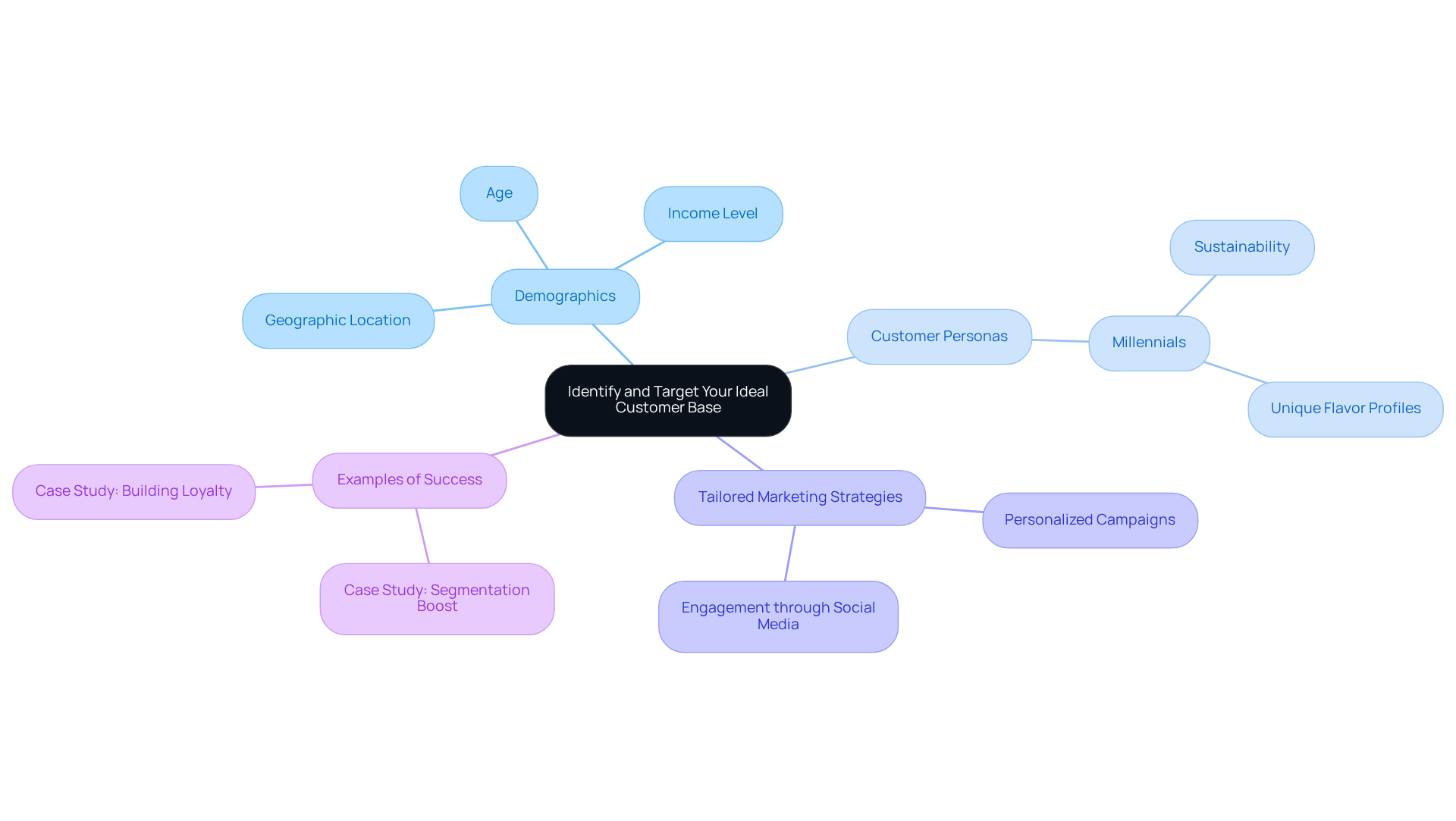
Build an Engaging Online Sales Platform
To establish a compelling online sales platform for beverages, begin with the selection of an e-commerce solution tailored to your business needs. Leading platforms such as Shopify, WooCommerce, and Commerce7 offer robust features designed specifically for beverage sales. Your website must be user-friendly, with intuitive navigation and high-quality images that effectively showcase your products. Detailed descriptions for each beverage, focusing on unique characteristics and tasting notes, are essential to engage potential buyers.
Implementing secure payment options is vital for building consumer trust and ensuring compliance with age verification laws, which are crucial in the beverage industry. Furthermore, integrating a blog can significantly enhance your site's SEO, attracting more visitors through valuable wine-related content. This strategy not only boosts your online presence but also positions your brand as an authority within the beverage market, fostering stronger connections with consumers.
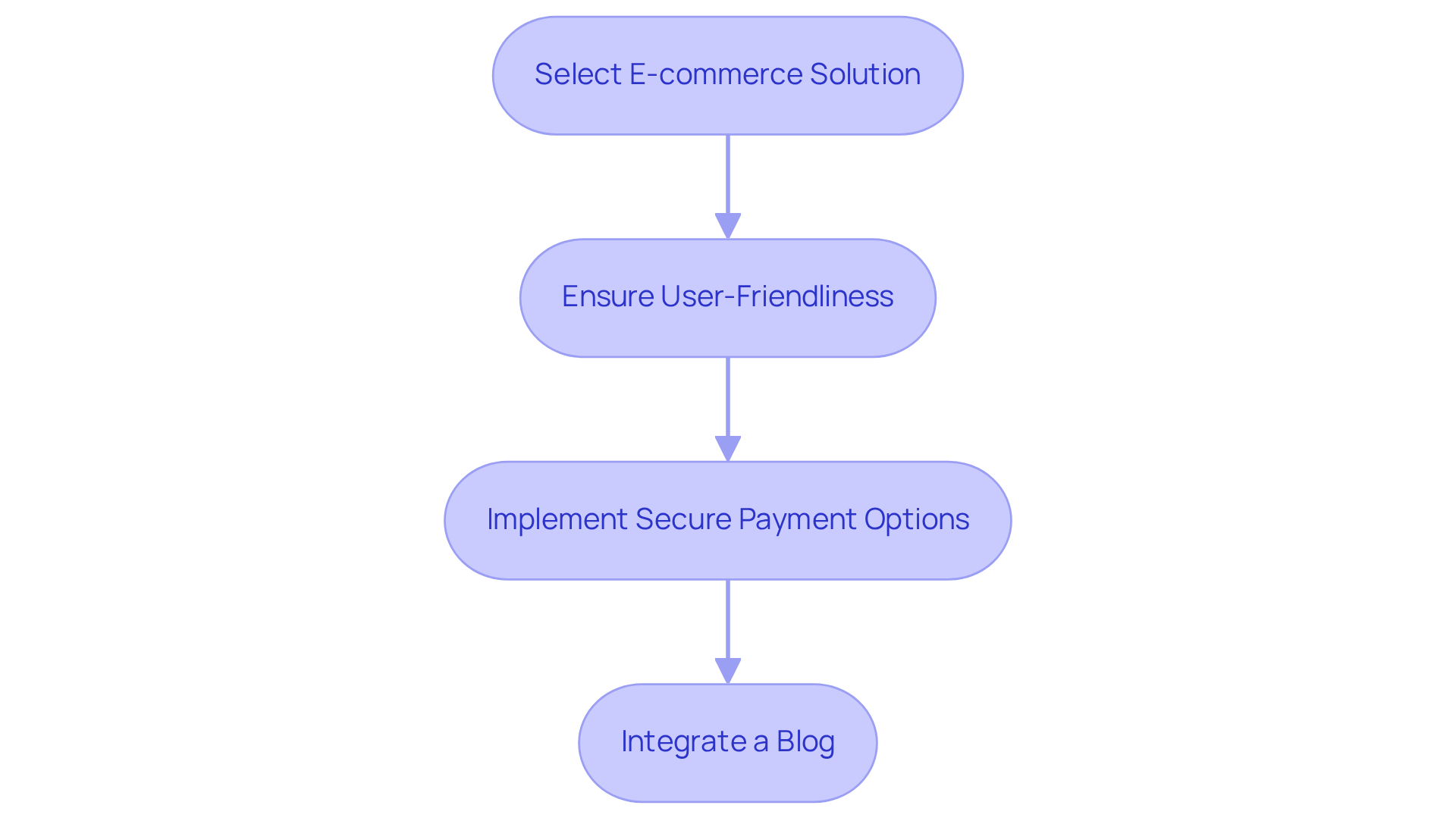
Implement Effective Marketing and Promotion Strategies
To effectively promote your wine business, understanding how to sell wine from home by harnessing both digital and traditional marketing strategies is essential. Begin by establishing a robust social media presence on platforms like Instagram and Facebook, where visual storytelling captivates potential clients. Wineries that actively engage on social media achieve an impressive average of 171.3 engagements per post, underscoring the necessity of consistent interaction with followers. Additionally, consider running targeted ads to reach specific demographics; notably, 71% of customers are more inclined to purchase based on social media referrals.
Email marketing remains a potent tool for nurturing relationships. Developing a newsletter can keep your audience informed about news, promotions, and insightful content related to wine. According to the 2023 SVB Direct-to-Consumer Wine Report, effective email campaigns yield open rates around 20.2%, marking them as a valuable asset for driving engagement.
Partnering with local influencers or bloggers in the beverage industry can significantly expand your reach. Successful campaigns, such as those executed by Santa Margherita, which garnered over 210.2 engagements per post, illustrate the efficacy of authentic partnerships in enhancing brand visibility.
Furthermore, hosting virtual tastings or wine clubs provides insights on how to sell wine from home, as it fosters community and encourages repeat purchases. Experiential marketing approaches, exemplified by Eleven Eleven Wines, cultivate deeper connections with consumers, ultimately leading to increased loyalty and sales. By integrating these strategies, wineries can effectively boost their sales and strengthen their market presence.
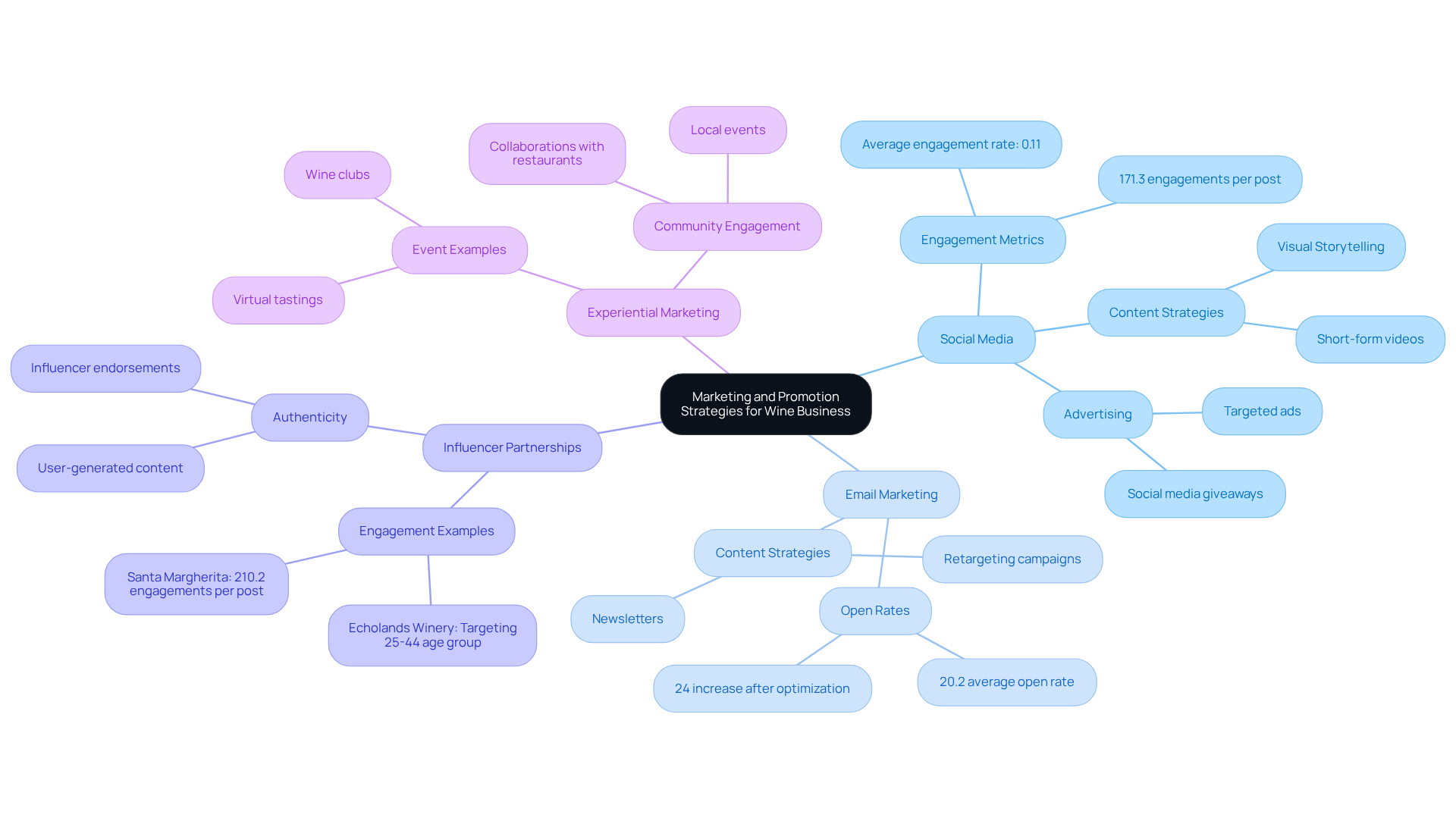
Optimize Shipping and Fulfillment Processes
To enhance your shipping and fulfillment processes, it is essential to collaborate with a dependable logistics provider skilled in managing beverage shipments. This partnership not only ensures efficiency but also positions your business for success in a competitive market.
Your packaging must meet legal requirements while effectively protecting the wine during transit. Utilizing lightweight materials, such as inflatable air cushions or corrugated inserts, can minimize shipping costs without compromising product integrity. Furthermore, consider offering various shipping choices to meet diverse client needs, including expedited shipping for last-minute gifts.
Implementing a tracking system that integrates with carriers via APIs or webhooks is crucial. This keeps clients informed about their orders and ensures compliance with shipping regulations. Additionally, familiarize yourself with state-specific shipping laws, including the necessity for adult signature verification, to avoid potential legal issues.
Consistently assess your shipping expenses and procedures to identify opportunities for enhancement. This practice not only improves client satisfaction but also strengthens your operational efficiency. Incorporating automated notifications at key shipment stages can further enhance the customer experience and reduce missed deliveries.
Lastly, consider the impact of real-time weather data on your logistics strategy. This proactive approach allows you to manage extreme conditions effectively, ensuring that your products arrive safely and on time.
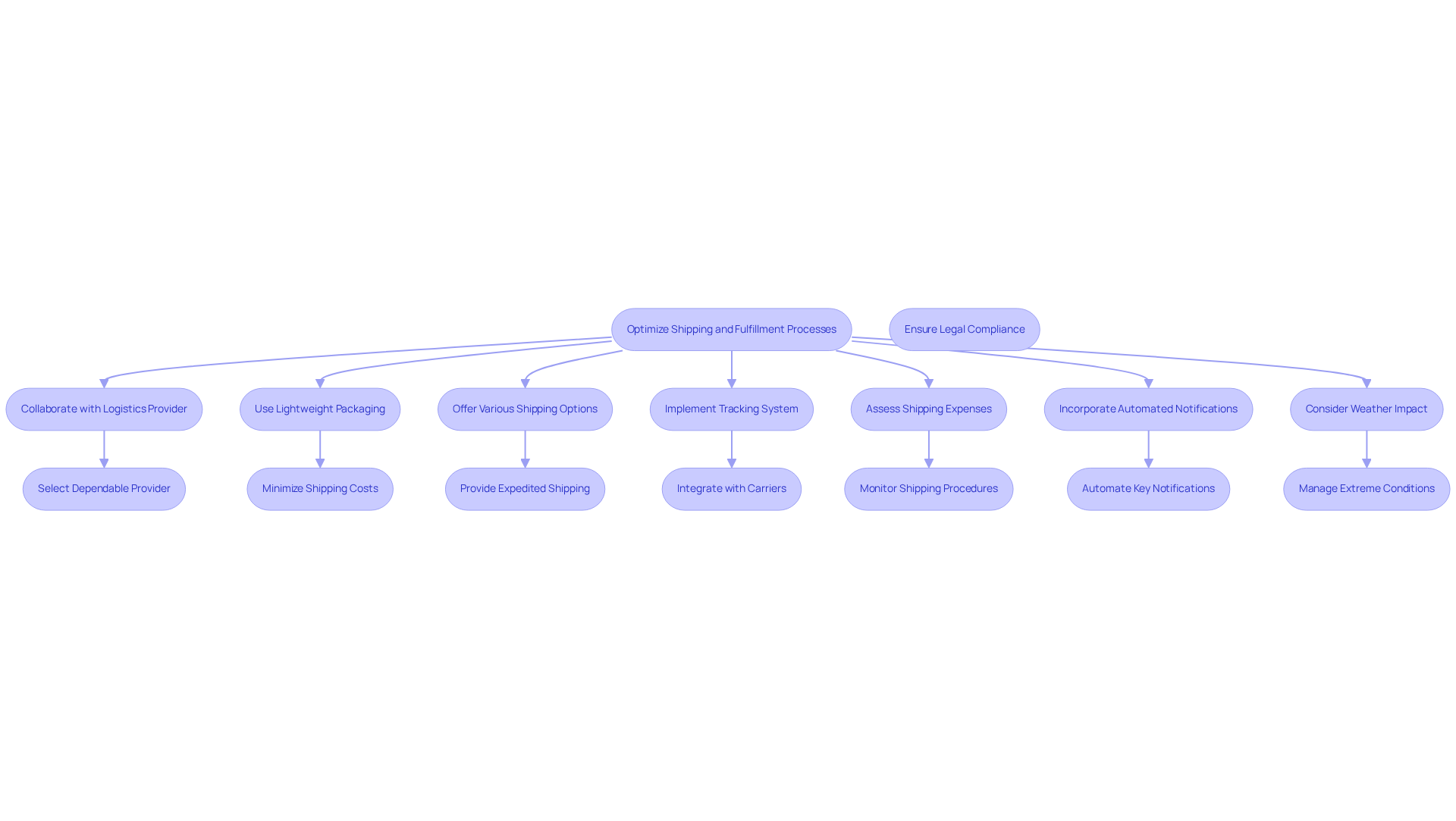
Conclusion
Selling wine from home is a complex endeavor that demands a strategic approach, encompassing legal compliance, customer targeting, effective marketing, and optimized logistics. Understanding the necessary legal requirements, identifying the ideal customer base, and crafting an engaging online presence are essential steps for aspiring wine entrepreneurs to establish a robust foundation for their home-based business.
Key insights reveal the critical nature of:
- Obtaining the appropriate permits
- Tailoring marketing efforts to resonate with distinct demographics
- Leveraging powerful e-commerce platforms
Moreover, efficient shipping and fulfillment processes are vital for sustaining customer satisfaction and ensuring the safe delivery of products. Each of these components is instrumental in driving sales and building a reputable brand within the competitive wine market.
Ultimately, the journey of selling wine from home transcends mere product transactions; it is about cultivating relationships and creating memorable experiences for customers. By adopting innovative marketing strategies and prioritizing customer engagement, wine sellers can foster loyalty and nurture a vibrant community around their brand. Implementing these strategies not only enhances sales potential but also contributes to the broader landscape of the wine industry, promoting a thriving culture of direct-to-consumer sales.
Frequently Asked Questions
What are the legal requirements for selling wine from home?
To sell wine from home, you must first obtain a Federal Basic Permit from the Alcohol and Tobacco Tax and Trade Bureau (TTB). Additionally, you need to check your state's regulations, as each state has distinct licensing requirements. For example, in California, you must obtain a state permit from the Alcoholic Beverage Control (ABC) and get label approval before selling any alcoholic beverage. It is also important to research local zoning laws to ensure compliance with local ordinances.
How can I identify my ideal customer base for selling wine?
To identify your ideal customer base, analyze key demographics such as age, income level, and geographic location. You can gather information through surveys and social media insights to understand potential clients' preferences and behaviors. Developing detailed customer personas that highlight their interests and buying habits will help tailor your messaging to connect with them effectively.
Why is targeting millennials important for selling wine?
Targeting millennials is important because they tend to spend more on quality foods and drinks compared to previous generations. By focusing on this demographic, wineries can emphasize features like sustainability and unique flavor profiles in their promotional efforts, enhancing engagement and nurturing brand loyalty.
What benefits can personalized promotional campaigns provide for wineries?
Personalized promotional campaigns can significantly increase sales by transforming casual buyers into devoted club members. For example, one winery experienced a 3x increase in open rates after segmenting their audience, demonstrating the effectiveness of targeted marketing strategies.
How can wineries promote steady growth in the competitive beverage market?
Wineries can promote steady growth by creating sustainable direct-to-consumer channels. This approach not only helps in reaching the target audience effectively but also ensures wineries can adapt to market demands and maintain relevance in a competitive landscape.
What resources can assist wineries in strategic planning for selling wine?
Enocap's capital advisory services can assist wineries in strategic planning for debt, equity, or acquisition opportunities. This support ensures that wineries have the necessary resources to implement direct-to-consumer strategies effectively.




